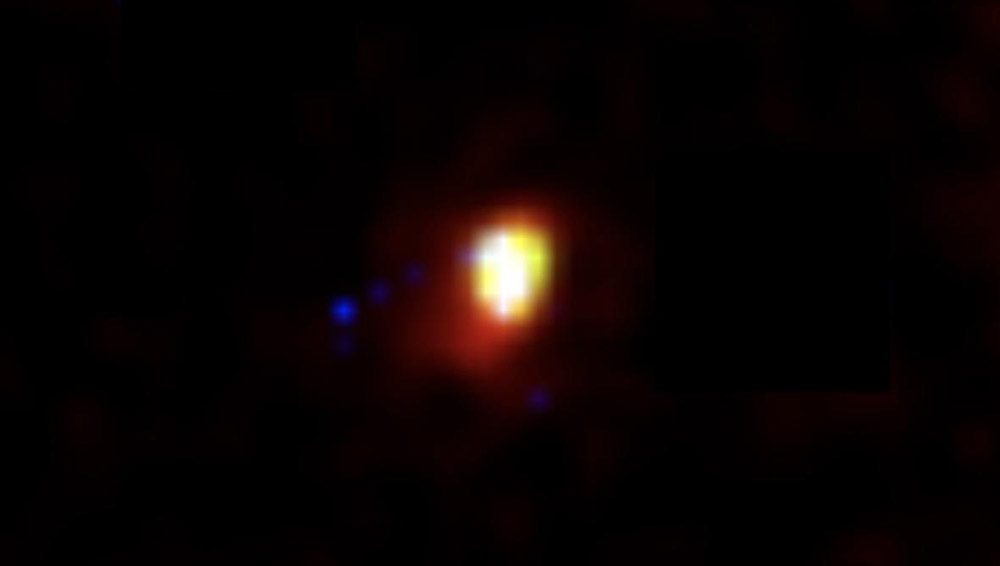In the images of the James Webb Telescope, astronomers have discovered many early galaxies that surpass all previous records. One of these groups of stars has an unprecedented redshift of 16.7 – so it existed 235 million years after the Big Bang. The images also provide new information about the luminosity and rate of star formation in early galaxies and indicate that these star clusters grew faster than previously thought, the researchers report.
since that James Webb Space Telescope Beginning her scientific process, things go in quick succession: even in the beginning deep field recording The telescope looked deeper into space than any other instrument before it and revealed unprecedented details of early galaxies. Based on this data, astronomers followed her glass-z13 For the first time a galaxy existed 300 million years after the Big Bang.
55 early galaxies at once
But a few days later, that record became history again: astronomers working with Callum Donnan of the University of Edinburgh discovered a whole host of other ancient galaxies — including many older than GLASS-z13. For their study, the researchers evaluated more deep-field images from the Webb Telescope’s NIRCam near-infrared camera. In the data, they specifically looked for galaxies with a redshift greater than z = 7.5 – and thus for groups of stars that formed in the early universe.
Successfully: Astronomers immediately identified 55 early galaxies in the section of sky surveyed, 44 of which were previously unknown. Six of these galaxies had a redshift of more than z = 10, which means they came from less than 480 million years after the Big Bang. “This alone provides dramatic confirmation of the much-anticipated James Webb Telescope’s ability to map the evolution of galaxies during the first ~300 million years after the Big Bang,” Dunant and his team wrote.
The luminosity and size of the newly discovered galaxies indicate that even these early groups of stars were much more active and brighter than previously thought. “UV luminosity intensity shows a constant exponential decrease with increasing redshift up to at least z = 12,” the team wrote. So the formation of galaxies must have started much earlier.
The galaxy already existed 235 million years after the Big Bang
The newly discovered galaxy stands out in particular: a faint red dot in the image showed a redshift of z = 16.7 – more than ever measured for a cosmic object. This galaxy, called CEERS-93316, should have existed less than 235 million years after the Big Bang. “We found no other plausible explanation other than that of a galaxy with a standard redshift z = 16.7,” Dunant and his team wrote. This object can be seen very clearly in the NIRCam data, and therefore cannot be a nearby star or an active galactic nucleus.
Not only that, spectroscopic analysis of the light from CEERS-93316 indicates that the age of the stars in this galaxy is, on average, at least 20 million years. The stars in this early group must have formed between 120 and 220 million years after the Big Bang, astronomers explain. This also indicates that the first stars and galaxies in the universe formed much earlier than had been expected for a long time.
“It’s amazing: we have here a telescope that was developed specifically for these observations: it allows us to look back at the formation of the first stars and galaxies over 13.5 billion years ago!” Dunant says. “This is undoubtedly just the beginning of many meaningful observations that will be made with this tool over the coming weeks, months and years.” (Monthly Notices of the Royal Astronomical Society, Provided; arXiv: 2207.12356)
Source: University of Edinburgh, arXiv

“Social media evangelist. Baconaholic. Devoted reader. Twitter scholar. Avid coffee trailblazer.”







More Stories
These brands are most vulnerable to phishing scams
Apple Maps Now Has a Web Version and Wants to Challenge Google Maps
Best AirDrop Alternatives for Android